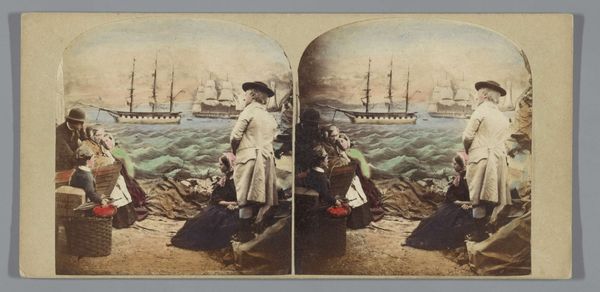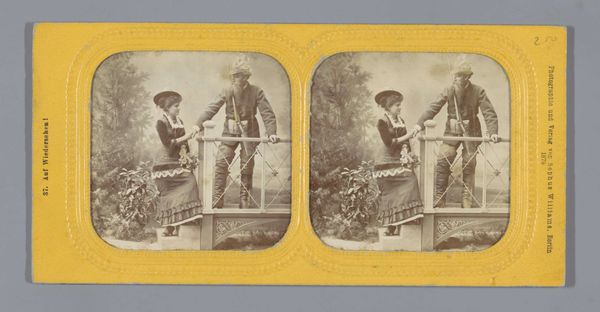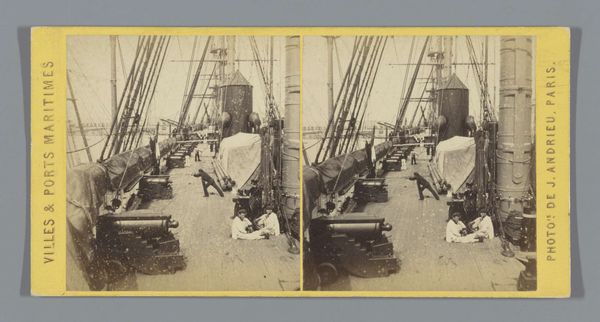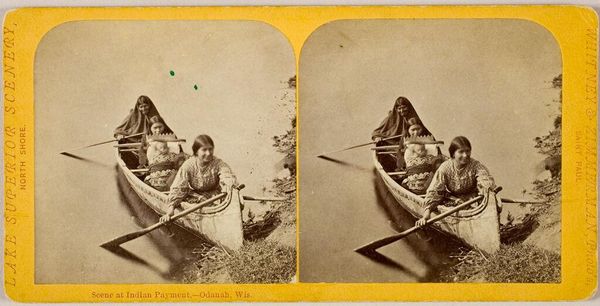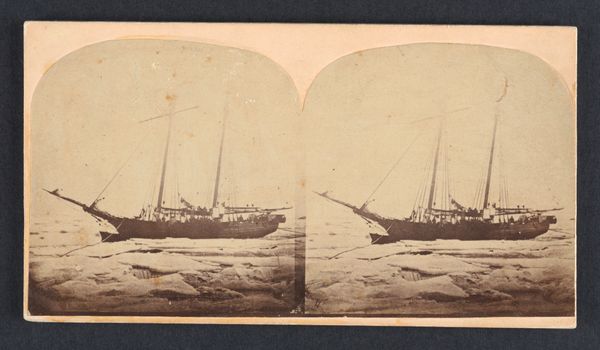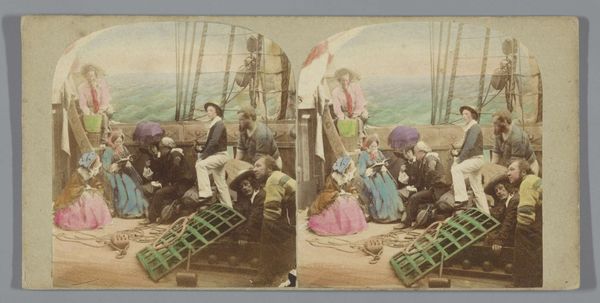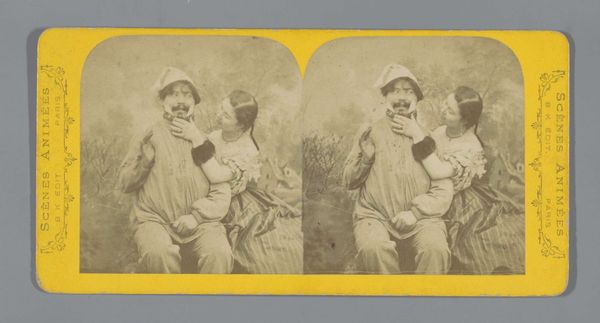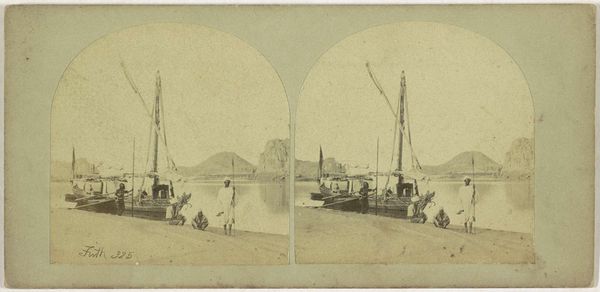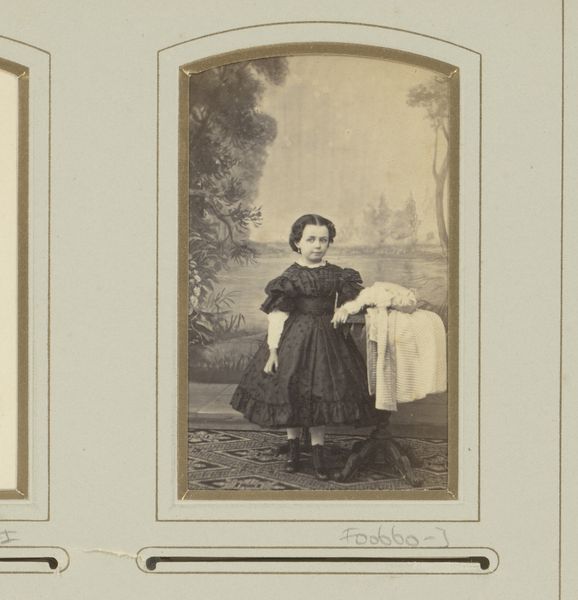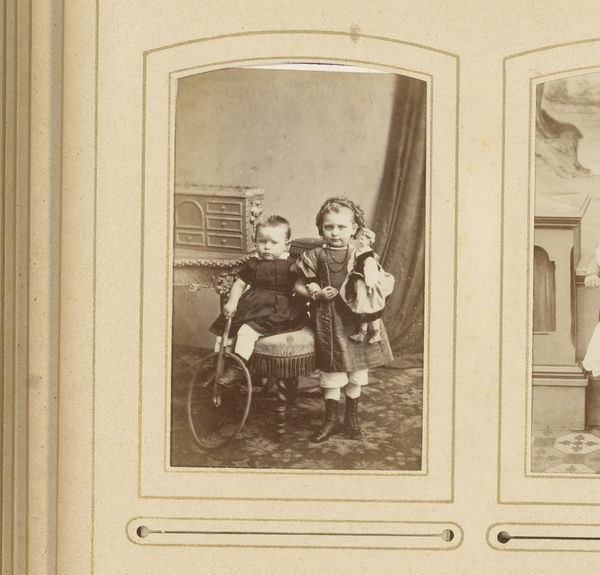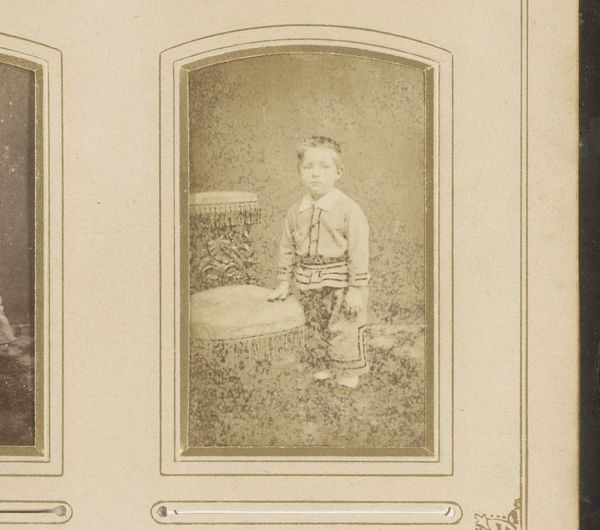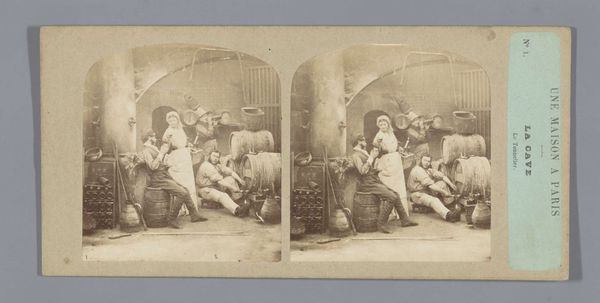
photography
#
portrait
#
photography
#
historical fashion
#
coloured pencil
#
genre-painting
#
realism
Dimensions: height 86 mm, width 176 mm
Copyright: Rijks Museum: Open Domain
Curator: This is "Portret van een jongetje voor een decor met schip," or "Portrait of a Young Boy in Front of a Ship Backdrop," a photo likely created between 1873 and 1890 by Sophus Williams. Editor: Well, isn't this just precious? There's something almost dreamlike about it, like a childhood fantasy all neatly packaged. The light, faded colours give a certain innocence. Curator: The charm absolutely comes from the staged quality, don't you think? The boy’s sailor suit, the backdrop...all creating a specific, idealized vision of boyhood, but I'm interested in the process; how these scenes became popular to create a moment for someone who wants to keep memories in print Editor: Oh, definitely, it speaks of manufactured nostalgia. You can almost smell the fake ocean air! I mean, that ship in the background is hilariously unconvincing. What story is the portrait really trying to convey? Ambition, perhaps? Curator: Maybe it was just a fleeting fantasy for a kid? You’re right though, the studio backdrop seems at odds with the supposed realism—but I think this realism exists for people. Think about what would make a buyer chose this backdrop against the one to the left? And how many copies of the picture have been made to this day. Editor: Right. The hand-tinted colours suggest care in this mass production...it’s about the perceived value through what, at its heart, remains an industrial output. Curator: Yes! It blurs the lines between genuine craft and constructed reality so cleverly that it reflects more of societal aspiration and mass production techniques, how the same materials and production method are consumed in various degrees and intensities in distinct societies. Editor: It makes you wonder about all the lost labour and forgotten faces who contributed to this. Each photograph then become less an individualized representation and more an item—a symbol in broader network, of economical transactions and social meaning. Curator: It’s interesting to view this, both from what the image tries to convey and how the manufacturing has influenced this piece—there is much to interpret. Editor: Indeed, each object has a history and can teach you new things, and for this image, my assumptions have certainly changed!
Comments
No comments
Be the first to comment and join the conversation on the ultimate creative platform.
